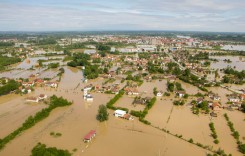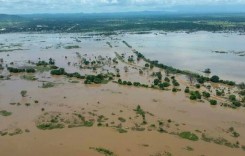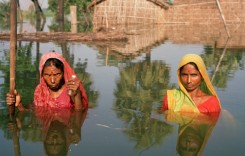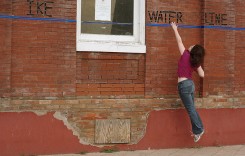Over 250 people have died in South Asia over the last few days after torrential monsoon rains caused flooding and landslides India, Nepal, Pakistan and Bangladesh.
India
In India the worst hit states are Bihar and Assam, where millions of people have been affected and over 200,000 displaced.
Flood-related deaths and evacuations have also been reported in Mizoram and Tripura, where a total of 5 people have died, and Uttar Pradesh where 14 people have died.
Recent heavy rainfall in Mumbai is said to have caused a building to collapse in the Dongri area of the city on 16 July, leaving dozens trapped and at least 14 dead. This is the second spate of rain-related deaths in the city in the space of just a few weeks. Dozens of people died after heavy rain in Mumbai and the surrounding state of Maharashtra in June this year.
Elsewhere in the country, India Meteorological Department (IMD) has issued a heavy rain alert for Kerala, Karnataka and Tamil Nadu from 18 to 20 July, 2019. Kerala experienced the worst flooding in its history from July last year when over 300 people died.
Bihar, India
Local disaster management officials in Bihar report that at least 2.6 million people are affected by the current flooding. Over 570 villages are under water across the 12 districts of Araria, Madhubani, Sheohar, Purnea, Darbhanga, Kishanganj, Supaul, East Champran, Sitamarhi, Muzaffarpur, Saharsa and Katihar.
Over 126,000 people have evacuated their homes and moved to 221 relief camps.
As of 17 July, 2019, Bihar Disaster Management reported 33 dead. This figure has increased over the following 24 hours, with local media now reporting at least 67 deaths.
The rains appear to have eased in the state over the last few days, although rivers remain high. As of 17 July, India’s Central Water Commission (CWC) reported rivers in Bihar to be at or above the danger mark in 17 locations, including the Mahananda river in Araria district, the Bagmati in Sitamarhi and the Kamla in Madhubani.
Assam, India
In Assam, flooding has affected 5.7 million people in over 4,600 villages across 29 districts in the state.
Over 150,000 people have moved from their homes and are staying in 819 relief camps. According to Assam State Disaster Management Authority, 11 people have lost their lives.
Over 170,000 hectares of crops have been submerged or damaged. Wide areas of the Kaziranga National Park have also been submerged, posing a serious risk to protected wildlife.
Rivers were at or above the danger mark in the state in 12 locations as of 17 July, including the
Brahmaputra river in the districts of Jorhat, Sontipur, Kamrup, Goalpara and Duhbri.
More rain has fallen since the start of the severe flooding. Bongaigaon recorded 230mm of rain in 24 hours to 15 July and Barpeta 200mm. Mazbat, Darang district, recorded 130 mm the following day. However, no significant rainfall was reported in the state on 17 July.
Nepal
As many as 78 people have now died as a result of the heavy rain, flooding and landslides in Nepal that began around 11 July, 2019. Twenty-two people are still missing.
Almost 400,000 people (76,990 families) have been affected, with 8,694 houses either partially damaged or fully destroyed. Around 17,000 people have moved to relief camps.
Thirty-one districts in the country have been affected, with Mahottari, Dhanusa, Rautahat, Sarlahi and Siraha among the worst hit.
As of 18 July Nepal’s Department of Hydrology and Meteorology (DHM) reported that there were no rivers above the danger mark in any parts of the country.
The rainfall has eased, although Kathmandu recorded 52mm of rain in 24 hours to 18 July. DHM said there were chances of heavy rainfall in eastern and central regions.
Bangladesh
According to National Disaster Response Coordination Center (NDRCC) in Bangladesh, 21 districts of northern, north-eastern and south-eastern Bangladesh have been affected by flooding and monsoon rains which began around 11 July.
Bangladesh Red Crescent Society (BDRCS) reported that 4.7 million people have been affected, with the worst of the flooding in Khagrachari, Netrokona, Lalmonirhat, Sunamganj, Bandarban, Cox’s Bazar, Chattogram,Sylhet, Rangamati, Gaibandha and Kurigram. Across the country 135,643 houses have been damaged.
According to the Pacific Disaster Centre (PDC) weekly report of 16 July, 37 fatalities were reported across the country (18 from lightning).
According to a report by CARE International, thousands of people have been marooned in their homes, schools have been closed and, in some cases, eroded to rivers, crops have been damaged, and livelihoods disrupted.
In the Rohingya refugee camps in south-east Bangladesh nearly 50,000 people have been affected, 6,076 displaced. Ten weather-related deaths have been reported in the camps since 21 April 2019.
The country’s Flood Forecasting and Warning Centre reported that, as of 16 July 2019, rives in 23 locations were flowing above danger level.
The flood situation worsened in the north of the country on 17 July when the Jamuna river broke through an embankment, inundating at least 40 villages in the district of Gaibandha and displacing more than 200,000 people.
Pakistan
In Pakistan, the National Disaster Management Authority (NDMA) reported on 17 July that a total of 46 people have died in rain and flood-related incidents since the start of the month.
This figure includes 27 people still missing, presumed dead, after flash floods in the Neelum Valley in the Pakistan-administered territory of Azad Jammu and Kashmir.
Torrential rain in parts of Punjab Province from 15 July caused flooding and houses to collapse. As of 17 July, 10 fatalities had been reported, including 7 in Sheikhupura. The city of Lahore recorded 100mm of rain in a 24 hour period to 16 July and 150mm the next day.
As of 17 July, NDMA reported that the Kabul river at Nowshera, Khyber Pakhtunkhwa Province, is in Medium Flood level. All other rivers are at or below normal levels.








